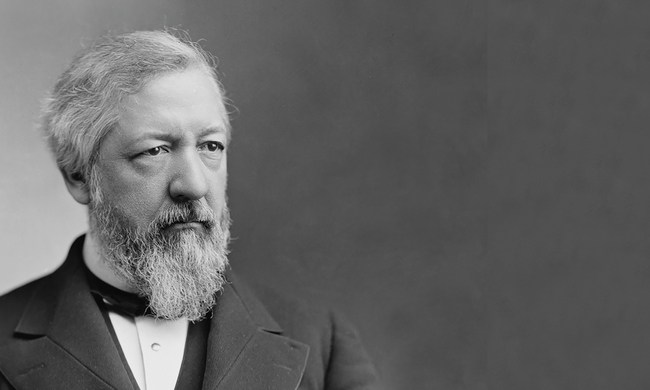Opponents of education reform often ask the courts to void programs of school choice.
They commonly claim that state constitutional provisions banning “sectarian” aid prohibit choice programs that include religious schools. Opponents won on this basis in a 2015 case, in which Colorado’s highest court struck down a voucher program because it included religious schools. (That decision was recently vacated.) A somewhat similar case is now pending in Montana.
Most of the “anti-sectarian” bans date from the 19th century. The Colorado provision, for example, became effective with ratification of that state’s constitution in 1876. The Nevada ban was added to that state’s 1864 constitution in 1880. The Montana clause is a 1972 re-enactment of one adopted in 1889.
Advocates and opponents of school choice have tussled for decades over the validity of these clauses. Somewhat misleadingly, they often are called “Blaine provisions” because of superficial similarities to a federal constitutional amendment proposed in 1875 by prominent politician James G. Blaine.
Thus far, the legal issues surrounding Blaine provisions have been clouded. However, historical research published this month in the scholarly journal Federalist Society Review likely will change that. The new findings show that “anti-sectarian” clauses — at least those adopted in the 19th century — almost certainly violate the U.S. Constitution as the Supreme Court now interprets it.
The new findings tell us that both advocates and opponents were operating from misunderstandings that made the constitutional issue seem harder than it is.
Advocates of school choice traditionally claim that when 19th-century lawmakers banned aid to “sectarian schools,” they really meant “Catholic schools.” Discrimination against some religions in favor of others, they contend, violates the First Amendment’s requirement that government treat religions equally.
Almost everyone agrees that the First Amendment requires government to treat religions equally, but advocates cannot always show direct connections between anti-Catholic sentiment and particular state constitutions.
School choice opponents traditionally respond that those who adopted 19th century constitutions understood “sectarian” as meaning merely “religious.” They argue that by banning aid to “sectarian” schools, states are maintaining a healthy separation from all religions equally. The Colorado Supreme Court took this position in its 2015 case.
So I undertook to learn the facts: What did 19th century constitution-writers really mean when they barred aid for “sectarian” purposes?
In quest of an answer I reviewed 19th century state constitutions and constitutional documents. I examined all relevant definitions in ten 19th century dictionaries. And I collected hundreds of contemporaneous newspaper articles from states throughout the country.
Here’s what I learned:
- In the 19th century, “sectarian” never meant merely “religious.” It always referred to a particular kind of viewpoint.
- Its principal use was as an insult. It was employed to tar people and views seen as narrow-minded or out of the mainstream. Nineteenth century writers, speakers, and political activists used “sectarian” in much the same way their modern counterparts employ the term “extremist.”
- Mainstream Protestantism, which was then dominant in America, was almost never viewed as sectarian. That is why administrators prescribed reading the “non-sectarian” King James Version of the Bible in preference to “sectarian” scriptures favored by other religious groups.
- Catholics frequently were attacked as “sectarians,” but so also were other unpopular groups: Mormons, Muslims, Jews, and even some Protestants perceived as overly-zealous.
Thus, the core purpose of the bans on “sectarian” aid was to require state officials to discriminate against minority and unpopular religions.
How did the states think they could get away with this? Because the Supreme Court had not yet determined that the Constitution requires states to follow the same rules of religious neutrality that regulate the federal government.
Last year, the Supreme Court found a similar state constitutional provisionpartially unconstitutional, although that case did not involve a school choice program. Moreover, it ordered the Colorado tribunal to re-examine its own decision.
Although for political reasons the Colorado case is unlikely to continue, within a few years, the Supreme Court probably will be confronted with the question of how state “anti-sectarian” clauses impact school choice programs.
These new findings suggest the court will find his kind of state discrimination flagrantly unconstitutional.
The article was published in the Federalist Society Review, and can be accessed here.
It was made possible by funding from the Education Policy Center at the Independence Institute.
This article first appeared in The Hill on January 24, 2018.








